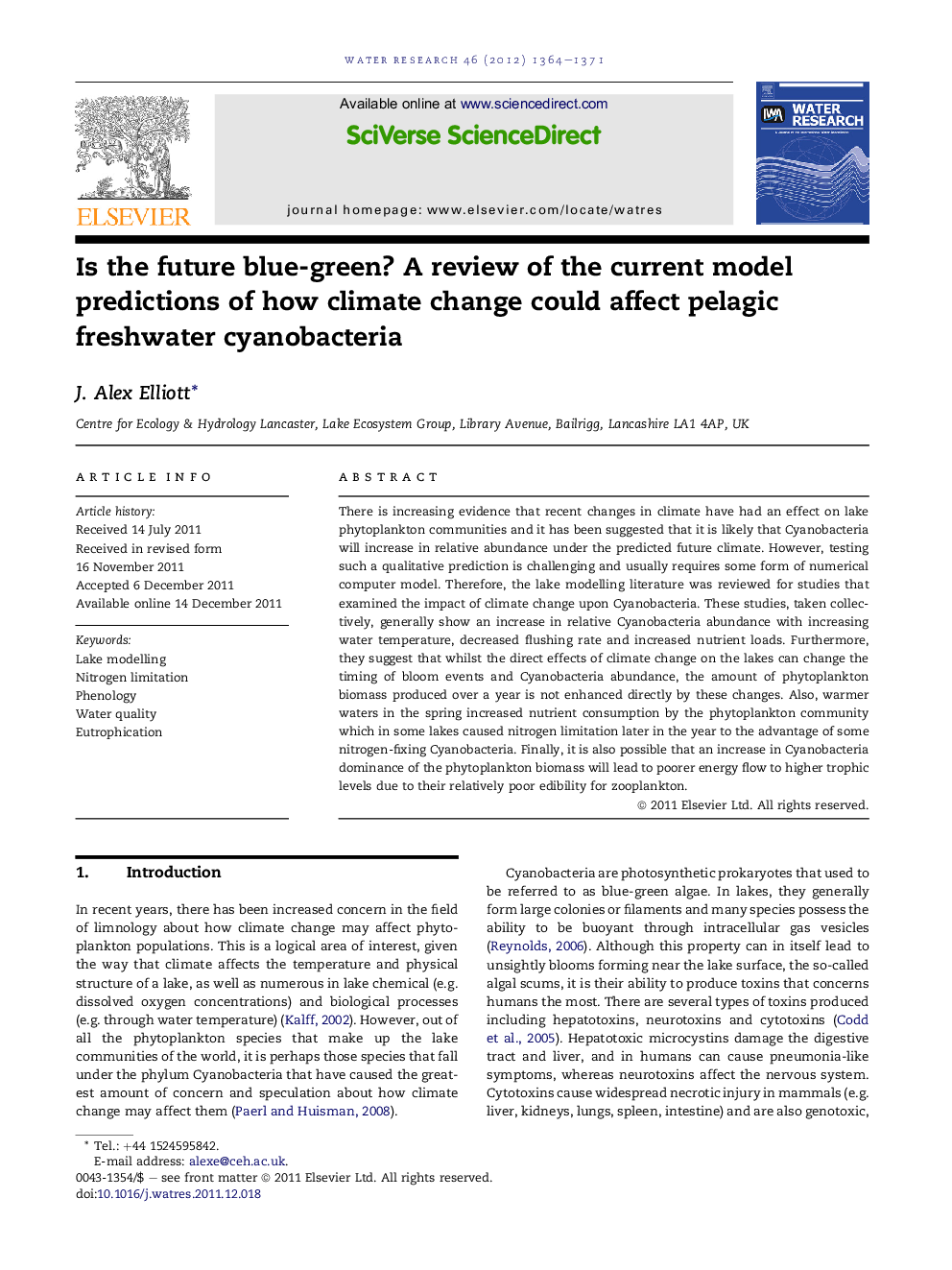| کد مقاله | کد نشریه | سال انتشار | مقاله انگلیسی | نسخه تمام متن |
|---|---|---|---|---|
| 4483618 | 1316894 | 2012 | 8 صفحه PDF | دانلود رایگان |

There is increasing evidence that recent changes in climate have had an effect on lake phytoplankton communities and it has been suggested that it is likely that Cyanobacteria will increase in relative abundance under the predicted future climate. However, testing such a qualitative prediction is challenging and usually requires some form of numerical computer model. Therefore, the lake modelling literature was reviewed for studies that examined the impact of climate change upon Cyanobacteria. These studies, taken collectively, generally show an increase in relative Cyanobacteria abundance with increasing water temperature, decreased flushing rate and increased nutrient loads. Furthermore, they suggest that whilst the direct effects of climate change on the lakes can change the timing of bloom events and Cyanobacteria abundance, the amount of phytoplankton biomass produced over a year is not enhanced directly by these changes. Also, warmer waters in the spring increased nutrient consumption by the phytoplankton community which in some lakes caused nitrogen limitation later in the year to the advantage of some nitrogen-fixing Cyanobacteria. Finally, it is also possible that an increase in Cyanobacteria dominance of the phytoplankton biomass will lead to poorer energy flow to higher trophic levels due to their relatively poor edibility for zooplankton.
► Lake modelling studies of climate change impacts on Cyanobacteria (Cb) were reviewed.
► Cb dominance was enhanced by temperature especially in nutrient rich lakes.
► Warmer Spring time caused an increase in nitrogen-fixing Cb later in the year.
► Increased Cb could lead to poor energy flow to higher trophic levels.
Journal: Water Research - Volume 46, Issue 5, 1 April 2012, Pages 1364–1371